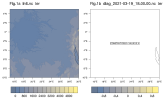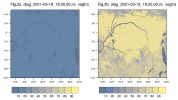lamizha
New member
I have read previous discussions about altering WRF's initial conditions: Altering WRF's initial conditions, and the replies for the WRF model are very helpful. I am wondering if changing intermediate files obtained from WPS is the best way to alter MPAS' initial conditions. If yes, how can I change variables from those intermediate files, which are not regular netcdf files? Thanks!



